With great beauty comes great responsibility. Given Leadville’s uniquely stunning panoramas and high-mountain trails, we…
Tech Week – Bike & Tire Guide for the Stages Cycling Leadville Trail 100 MTB
2021 Leadville Trail 100 Bike & Tire Guide
What’s the perfect bike for the Stages Cycling Leadville Trail 100? Well, funny you should ask. It’s a question that we’ve fielded year over year and one that continues to evolve as bike technology ebbs and flows. As time has gone on, we continue to find new and improved equipment setups that enhance the experience at the LT100MTB.
In order to help you narrow down your choice, we’ve put together a basic guide to bike selection for the LT100 MTB. Let’s start with the basics: wheels, tires & suspension.
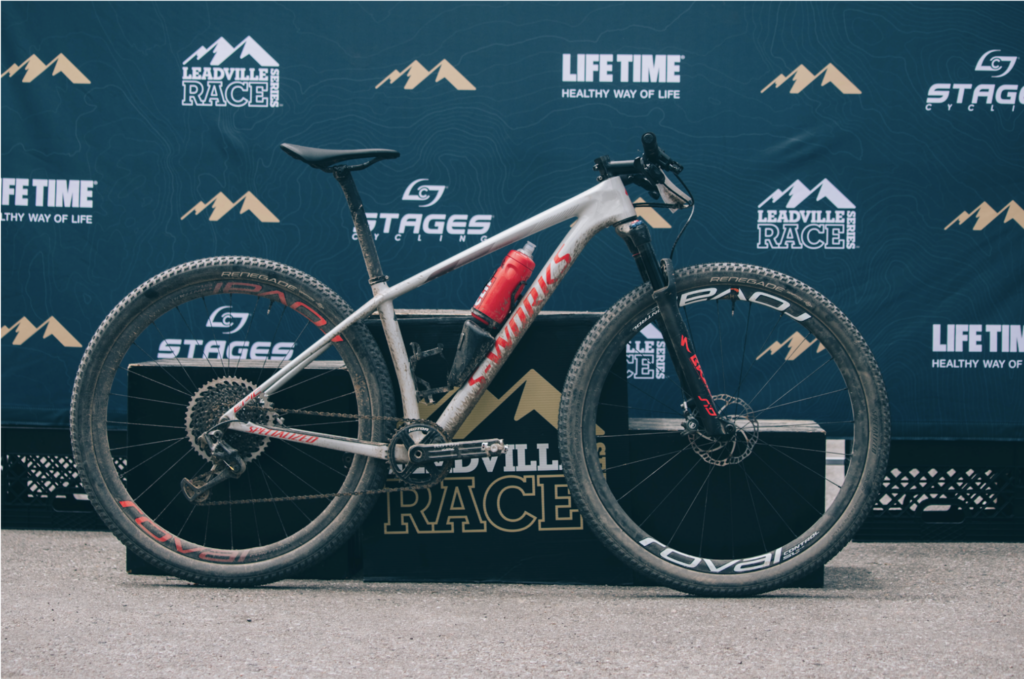
Wheel Size
When mountain biking first began gathering steam, there was but one wheel size – the 26 inch. All throughout the late 80’s and early 90’s athletes were pushing the limits on bikes with little to no suspension, smaller wheels and archaic geometry. In the early years of the LT100 MTB, we saw it all. Riders proved that the course could be conquered on just about any type of mountain bike.
They may seem archaic nowadays but let’s not forget that Dave Wiens won the Leadville Trail 100 on a 26” setup 6 years in a row. Not only that, but Dave had his fastest time ever at the LT100 MTB in 2010 aboard a 26” wheel setup, while many other riders were already aboard 29’ers.
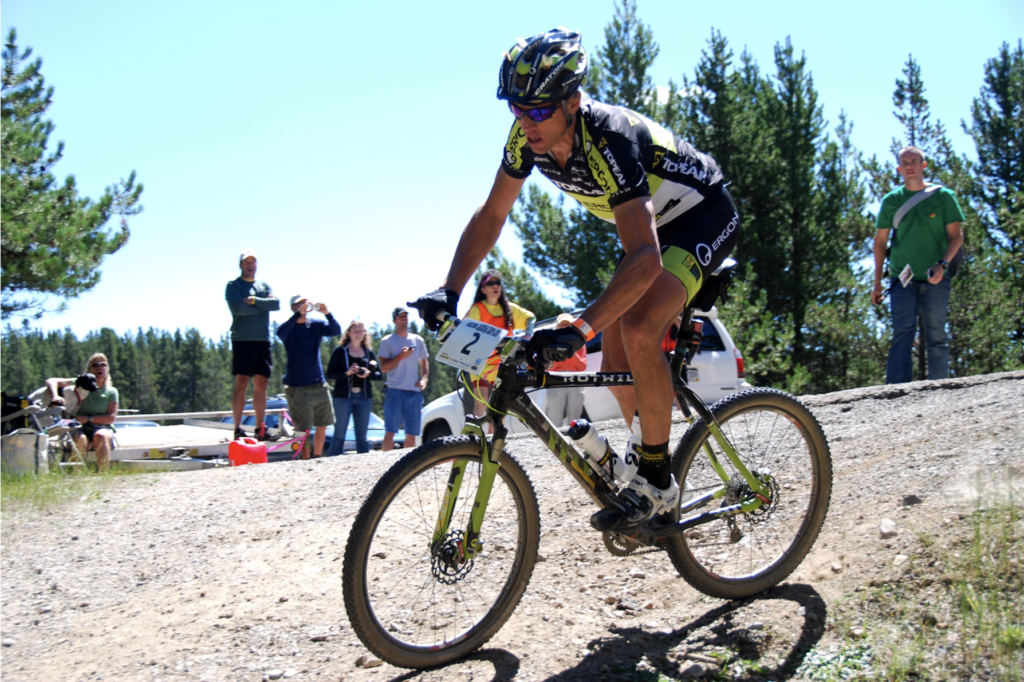
Since then, technology has evolved significantly and two additional modern wheel sizes have emerged – 27.5” and the 29” wheels.
29 vs. 27.5
The emergence of the 29” wheel began in the early 2000’s and took a few years to catch on. At first, the additional weight and longer wheelbase of a 29” bike made for slower handling and an overall lethargic feel of the bike. As bike companies figured out how to evolve their geometry with the bigger wheels, they resolved those issues and 29’ers are now snappier than ever. The primary benefits of running a 29’er wheel are:
- 29” wheels roll over obstacles with less effort
- 29” wheels will roll faster once they’re up to speed
Both of these benefits will stand out at the LT100MTB, as you spend hours climbing rocky fire roads and ripping fast and rolling dirt, and pavement in between.
Key takeaway: The 29” wheel undoubtedly offers the fastest and most efficient option of all the standard wheel sizes available today and is largely considered the wheel size of choice for the LT100MTB.
27.5” or 650b wheels began to emerge over the last 10 years, predominantly on the all-mountain or freeride scene. The smaller wheels are easy to maneuver, offer a snappier feel and tip the scales a little lighter than their 29’er brethren. Though the popularity of 27.5 wheels seems to have waned, you will often see 27.5” wheels on modern longer travel all-mountain bikes.
However, there’s a catch – 27.5” wheels do offer an additional benefit to shorter riders. You’ll often find smaller riders (under 5’3” or so) riding 27.5” wheels and find them easier to handle, and therefore a better choice for racing in Leadville.
Suffice to say, you do not need 29” wheels to perform well in the LT100MTB, but they stand out as the fastest options and almost all top riders are opting for the big wheels in modern editions of the race.
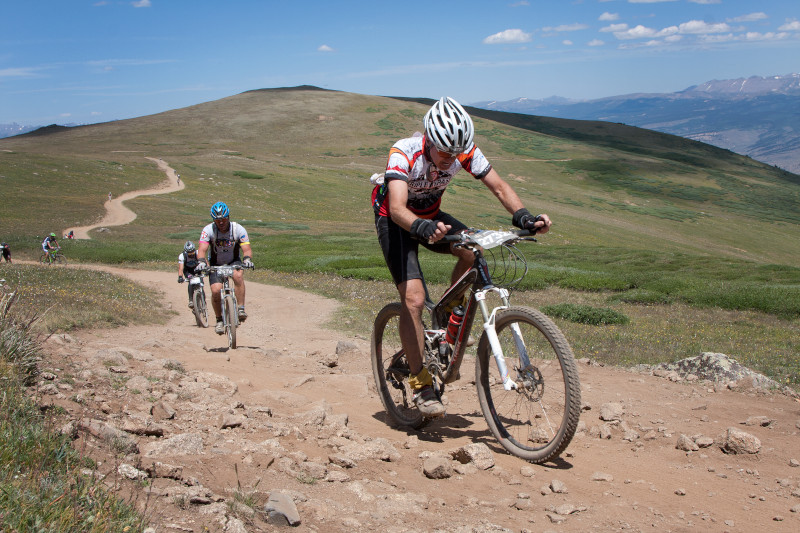
Suspension: Full Suspension or Hardtail?
Ahh, perhaps the most debated question in modern editions of the LT100 is whether to run a full suspension bike or a hardtail. Each of these drastically different options will offer a few key benefits, so, let’s break it down:
Full Suspension
A full suspension bike is going to offer a front suspension fork and a rear shock built into the frame. There is a multitude of full suspension frame designs these days and every manufacturer offers several different options, but the key benefits to running a full suspension bike are:
- Additional traction while climbing and descending – your rear wheel will stay on the ground and you can roll over rocks without the bike skipping or jumping.
- Support over rocky and rough terrain – the rear suspension will absorb impact on choppy and rough climbs like Hagerman Pass.
- Fatigue reduction over extended periods of time – that suspension will reduce continued impact on your body, resulting in less fatigue later in the race. Specifically your lower back, hands and arms.
Over the course of a 8-12+ hour LT100 MTB effort, many riders will say over and over again that a full suspension is the only way to go. Why? In a word, comfort. For us mere mortals, the strain that the LT100MTB puts on our body is significant. The additional support offered from rear suspension prevents back pain and provides additional comfort that you will thank yourself for in the second half of the race. The added benefits of the rear suspension on the descents provides an even stronger case for opting for a full-suspension setup.
So what’s the catch? Well, the primary drawback is the additional weight on the bike.
How much rear suspension is enough, or too much?
We recommend full-suspension frames with 100 – 120mm of travel rear travel. Modern trail bikes can have massive amounts of suspension that just isn’t necessary for the demands of the Leadville Trail 100 course and all that extra suspension does come at a cost. In addition to the extra weight, you’ll find yourself bobbing up and down if your suspension is too much.
Most modern cross-country bikes like the Specialized Epic will come with 100-110mm of travel, which is just enough to take the edge off of the rear end of the bike, but not so much that you’ll find yourself sagging deep in the suspension during a hard effort.
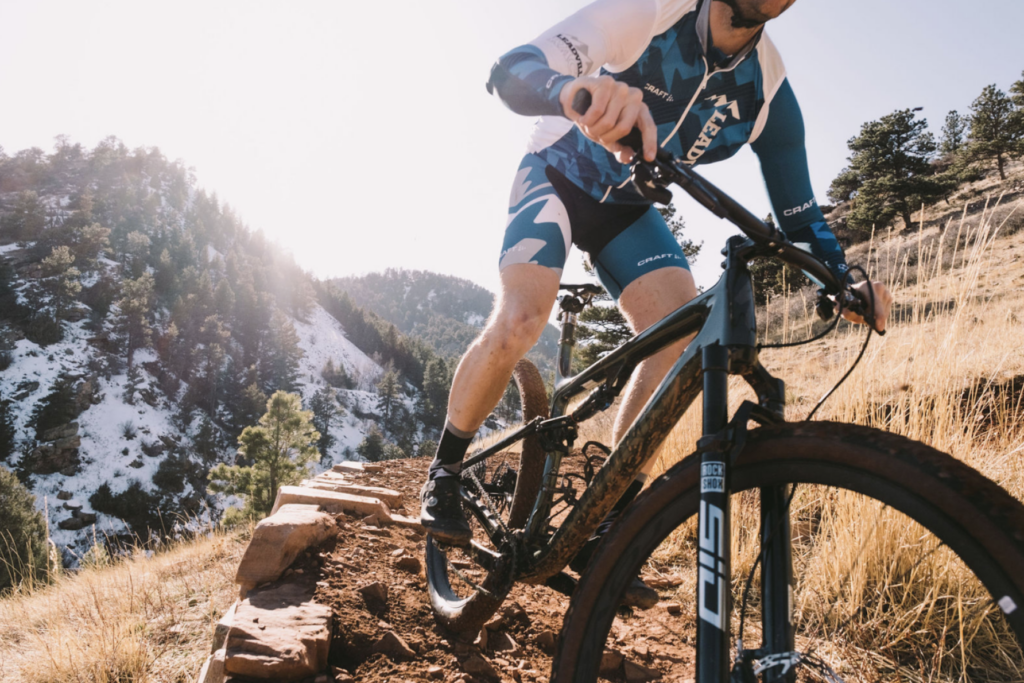
PRO TIP: Invest in a shock pump and make sure to set up your suspension properly. All too often, riders set it and forget it. The bike is far more efficient when set up properly. For more on suspension setup tips see the video below.
Hard Tail: the Rigid Warrior
So we just got done telling you how comfortable a full suspension bike will be, why would you consider a hardtail?
If you look at the winning bikes for the last few years it’s hard to ignore that many of the riders claiming the top podium spots are riding hardtails. Howard Grotts, Quinn Simmons and Sarah Sturm were all aboard the Specialized S-Works Epic Hardtails as they claimed podium spots in the 2019 LT100 MTB.
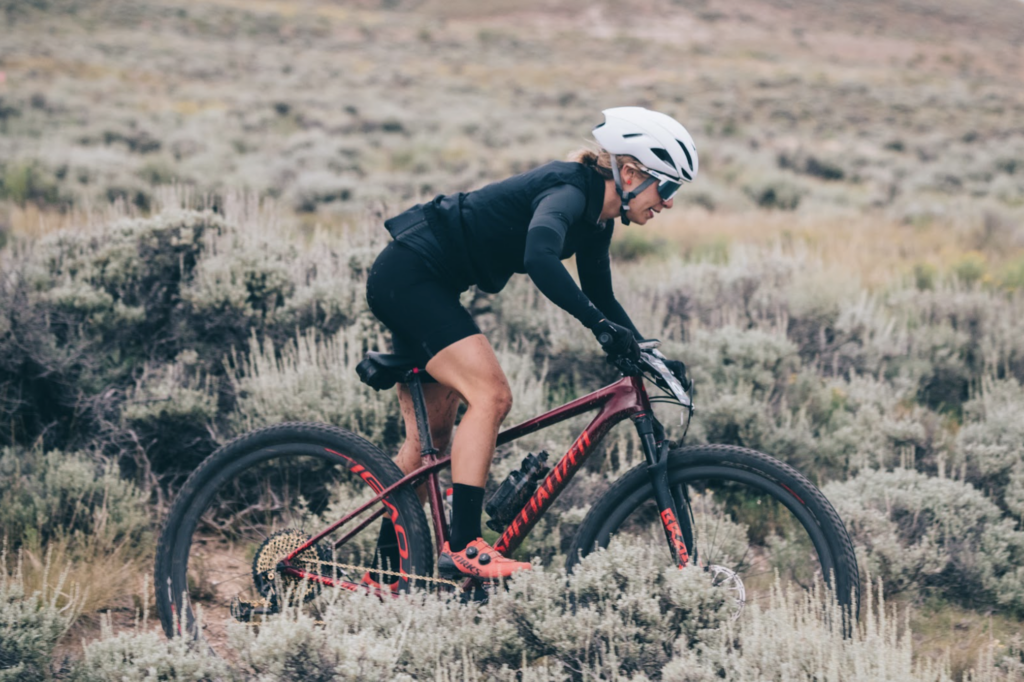
So why are these mountain goats foregoing the comfort of a full-suspension and beating themselves up on a hardtail?
A hardtail bike is lighter. There, we said it. For the athlete that has the fitness, bike handling skills and core strength to handle the LT100 on a hardtail, it could be a faster option. For many riders, the sturdiness and simplicity of the hardtail makes it the weapon of choice, for others, it’s viewed as simply lighter and faster.
So, What’s the Verdict?
At the end of the day, it boils down to your choice between the comfort and support of a full suspension bike or the quickness of a harsher riding hardtail. Both have proven to be successful at the LT100 MTB and both will be present on the start line, year in and year out.
Tires – Keep the Rubber Side Down
The Stages Cycling Leadville Trail 100 MTB course is a mixed bag. Between the rough and loose climbing and descending of Powerline to the desolate alpine landscape you experience on Columbine, the course will send you on a journey that will be sure to test your tires. Oh, and there’s pavement too.
The variability of the surfaces on the LT100 course makes tire choice a hotly debated topic. There exists a tradeoff between running a lighter and faster tire and a heavier grippy tire.
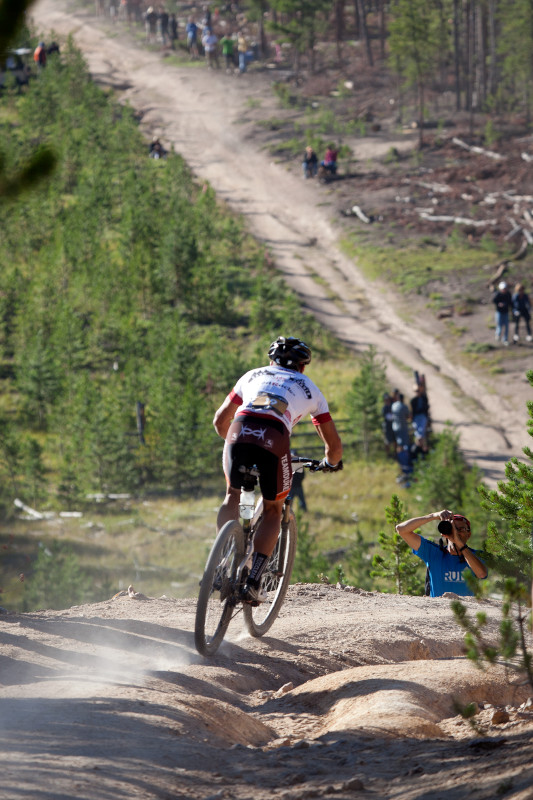
Despite many riders’ intentions to go as light and fast as possible, flat tires are an inherent risk. Sharp rocks of the Colorado alpine have been known to cause countless flats. Additionally, the loose descents and corners you navigate throughout the course are better suited for a grippier tire. For that reason, we advise going bigger rather than smaller.
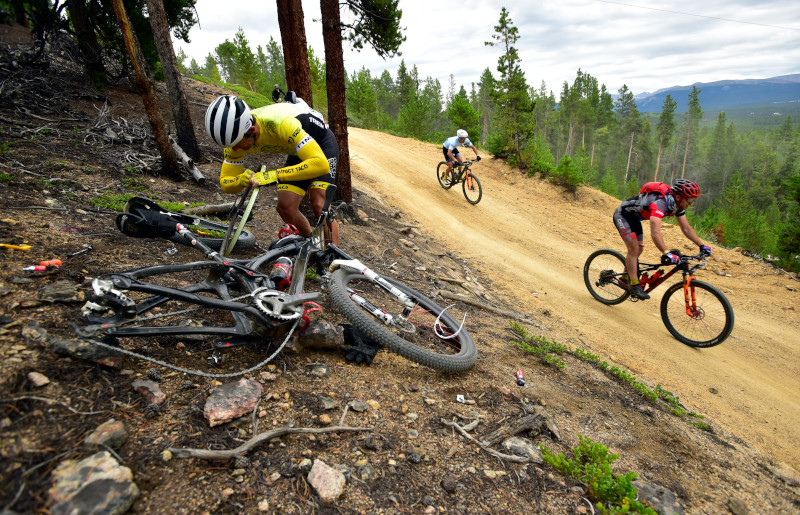
The optimal tire setup is a lightweight, medium/large width (2.3 – 2.4) cross-country tire in the front, and a fast-rolling XC tire in the rear, setup tubeless of course.
The front tire is responsible for the majority of your grip in the corners and a little extra tread makes a big difference. A common setup would be to run a Specialized Fast Trak 2.3 in the front and a Specialized Renegade 2.1 or 2.3 in the rear.
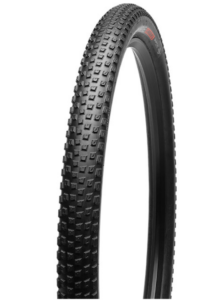
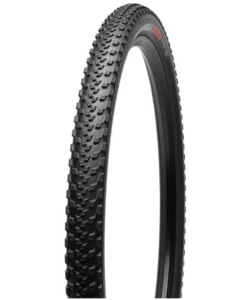
Final Words of Wisdom
Equipment choices are an inherent part of the planning process at LT100 MTB and no two riders are the same. What works for one rider may not work for another. So, the most important thing is to test, pre-ride and get to know your equipment choices. Spend a lot of time on your bike emulating the terrain in Leadville as much as possible and get comfortable on your bike. Carry a multi tool, a flat kit (and know how to use them!) on all of your rides and come prepared for race day fully acquainted with your gear.
Most of all, have fun! If you properly prepare your mind, body and your bike for race day, you’ll have a blast out there. Set yourself, and your bike, up for success and it will be one of the best experiences of your life!
